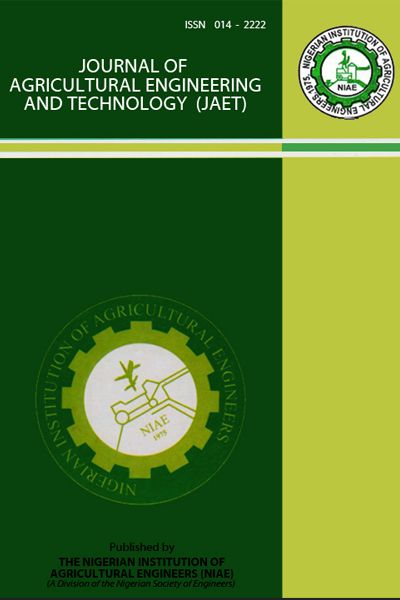DEVELOPMENT AND ASSESSMENT OF LOCALLY IMPROVISED BIOGAS REACTOR FOR BIOGAS PRODUCTION FROM CO-DIGESTION OF COW DUNG WITH FRUIT AND VEGETABLE WASTES
Keywords:
Anaerobic digestion, bio-digester, bio-waste, cow dung, biomass, fruit and vegetable wasteAbstract
Fruits and vegetables are very much in abundance in our environment and so is the waste generated from them, since they are highly perishable. This is an integral portion of the tonnes of food lost annually throughout the food and supply chain – during agricultural production, to food processing, and finally to household consumption. These wastes eventually constitute nuisance to the environment in form of pollution. In order to utilize these wastes for energy production, biogas was produced from the co-digestion of cow dung (CD) with fruit and vegetable wastes (FVW) using a designed and fabricated bio-digester. The CD, fruit wastes (FW) -watermelon (WFW) and pawpaw (PFW), and vegetable wastes (VW) were crushed and blended to pulp. From these, three slurry samples were prepared in ratios 1:2 with water. All samples contained 12.5 kg CD and 10 kg VW. In addition, Sample A contained 15 kg WFW, Sample B contained 15 kg PFW, and Sample C contained 10 kg each of WFW and PFW. Three bio-digesters were used, corresponding to one bio-digester per sample. Each sample was loaded once and readings taken over a period of 31 days at two hours interval between 8 am - 6 pm daily. All digester slurries were agitated regularly at each interval except for Sample C slurry in order to determine the influence of slurry agitation on biogas production. Results showed that daily temperature range was 34-44°C which is in the range of optimum mesophilic temperature for anaerobic digestion. The highest cumulative biogas yield (32.85 kg, mean 1.06 kg) was recorded in Sample A digester, followed by Sample B (29.60 kg, mean 0.95 kg), and lowest in Sample C (15.22 kg, mean 0.49 kg). From the study, it was concluded that slurry agitation improves biogas yield. Also, biogas is better produced from the co-digestion of cow dung with WFW and VW than from the co-digestion of cow dung with PFW and VW or the mixture of cow dung, PFW, WFW and VW. This study has therefore succeeded in contributing to environmental waste reduction as well as converting wastes to wealth by generating energy from wastes.


